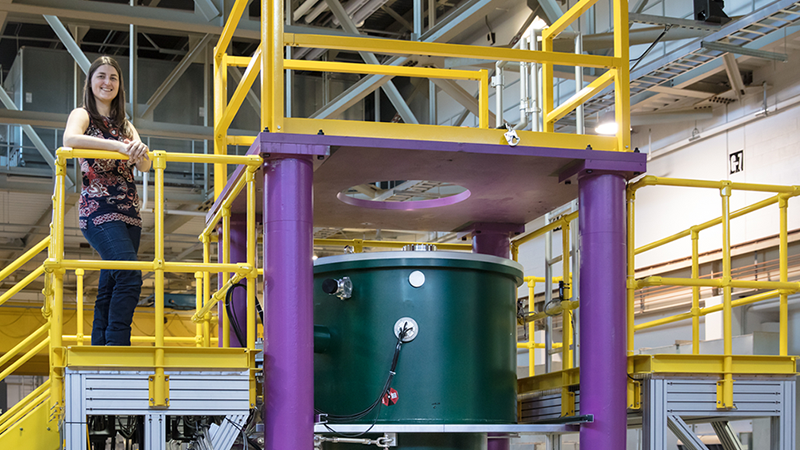November 21, 2018

Leah Broussard, a physicist at the Department of Energy’s Oak Ridge National Laboratory, has so much fun exploring the neutron that she alternates between calling it her “laboratory” and “playground” for understanding the universe.
“The neutron is special,” she said of the subatomic particle that, along with the proton and the electron, forms the atom. “It’s electrically neutral, and that makes it a really nice system to use to look at the weak force.”
The Standard Model of particle physics describes the weak nuclear force, as well as the strong nuclear force and the electromagnetic force. “The model has been an enormous success—correctly predicting new quarks, force carriers, and most recently the Higgs boson—but it’s not a Theory of Everything,” Broussard said. “We don’t know why we’re made of matter, and there doesn’t seem to be much anti-matter in the universe. We don’t know what dark matter is. We don’t know why the weak interaction seems to be only left-handed. We don’t know how to fit gravity into the Standard Model.”
Neutrons can help identify where the Standard Model “breaks.” Some of Broussard’s experiments amount to “crash tests” that push physics to its limits to see what in the model is missing or wrong.
Read more at ornl.gov/news.